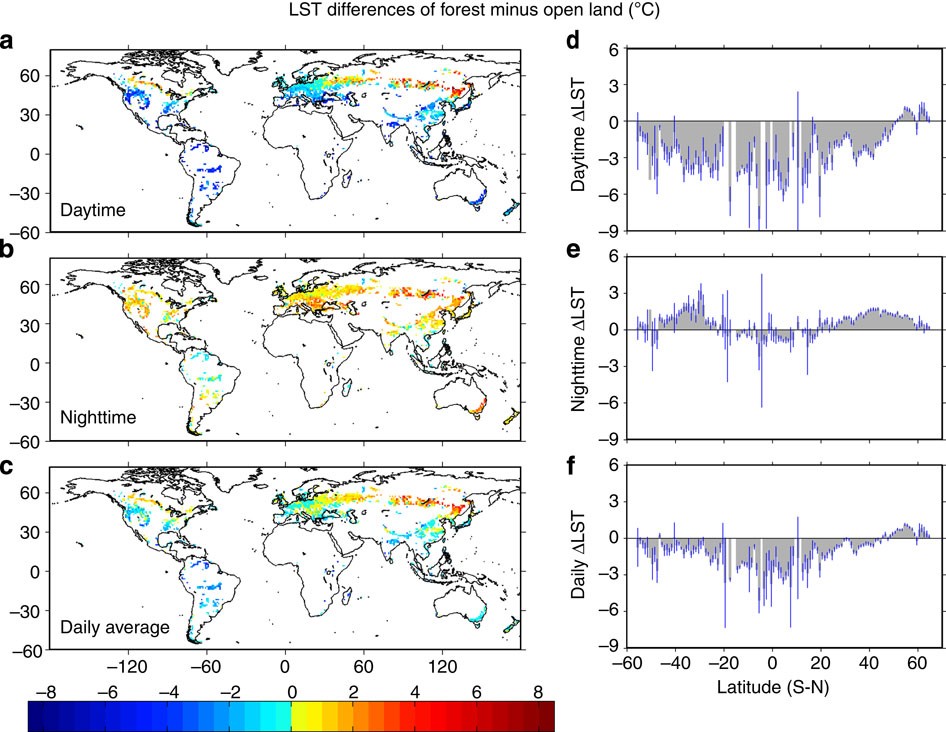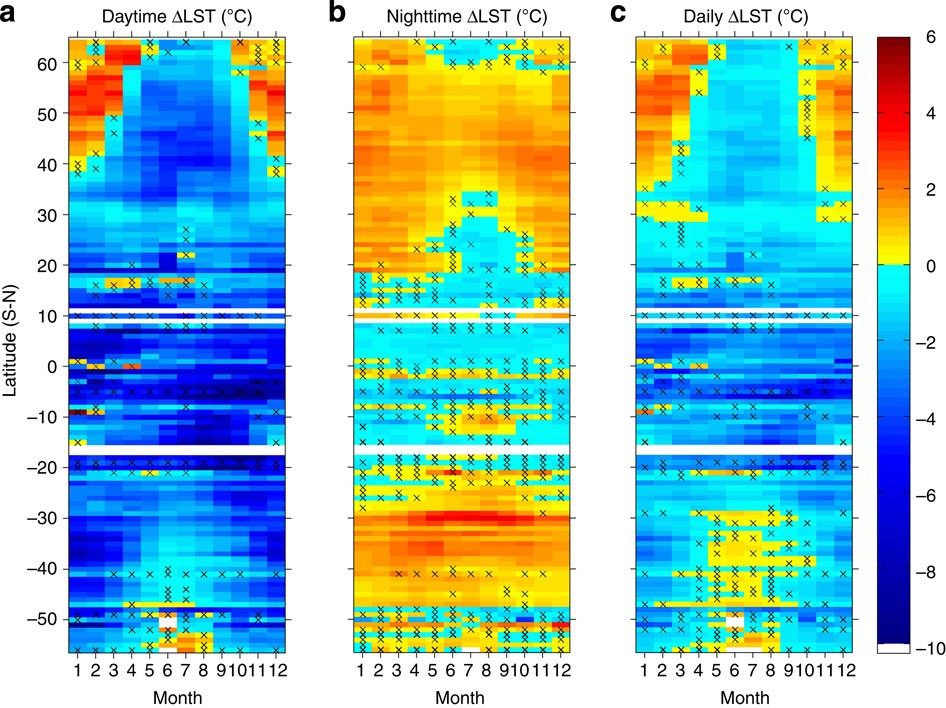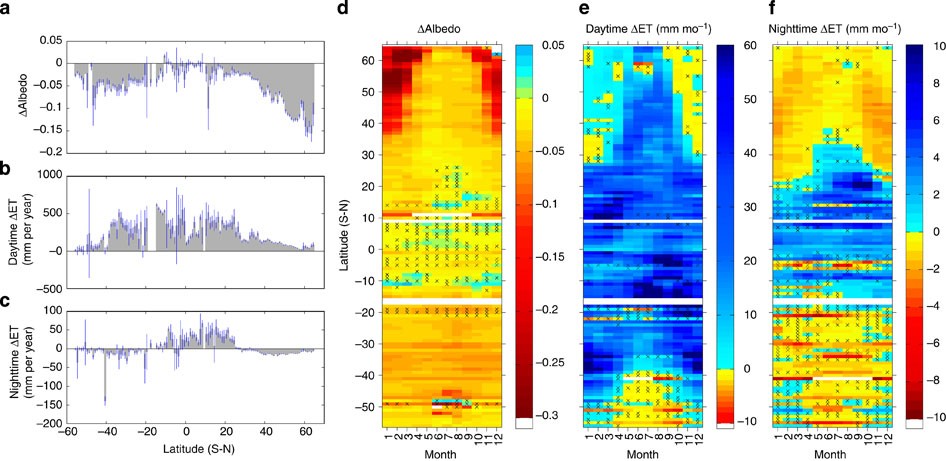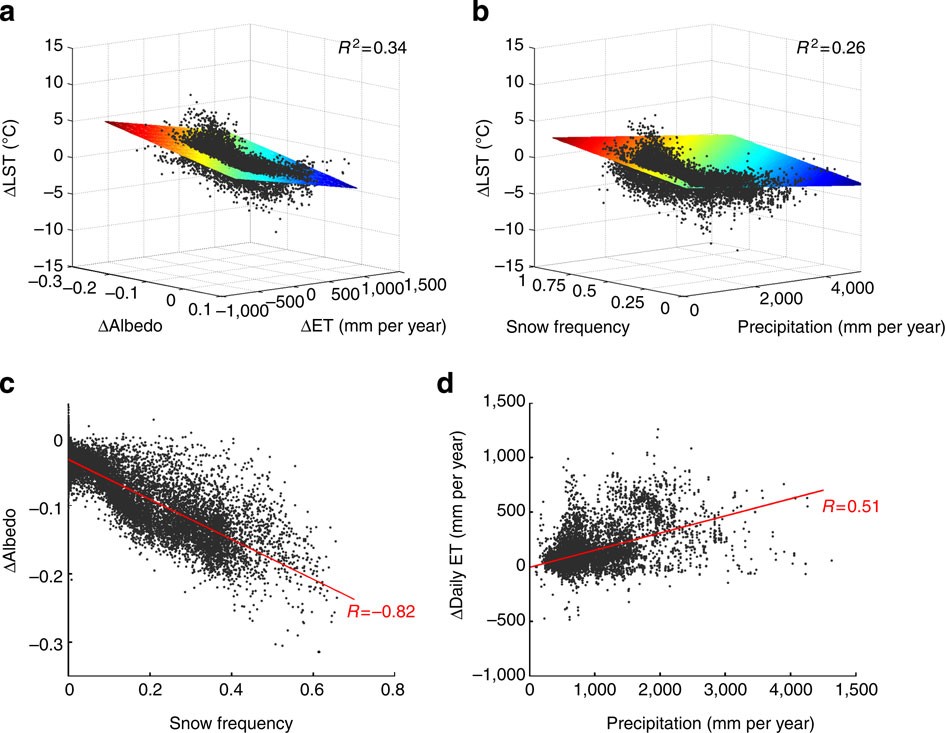文章信息:Yan Li, Maosheng Zhao, Safa Motesharrei, Qiaozhen Mu, Eugenia Kalnay, & Shuangcheng Li. (2015). Local cooling and warming effects of forests based on satellite observations. Nature Communications: 6(1), 6603.https://doi.org/10.1038/ncomms7603
整理人:杨文,2023级硕士生
整理时间:2024年8月13日
Abstract:The biophysical effects of forests on climate have been extensively studied with climate models. However, models cannot accurately reproduce local climate effects due to their coarse spatial resolution and uncertainties, and field observations are valuable but often insufficient due to their limited coverage. Here we present new evidence acquired from global satellite data to analyse the biophysical effects of forests on local climate. Results show that tropical forests have a strong cooling effect throughout the year; temperate forests show moderate cooling in summer and moderate warming in winter with net cooling annually; and boreal forests have strong warming in winter and moderate cooling in summer with net warming annually. The spatiotemporal cooling or warming effects are mainly driven by the two competing biophysical effects, evapotranspiration and albedo, which in turn are strongly influenced by rainfall and snow. Implications of our satellite-based study could be useful for informing local forestry policies.
摘要:森林对气候的生物物理影响已经用气候模型进行了广泛的研究。然而,由于模型的粗糙空间分辨率和不确定性,不能准确地再现当地气候效应,野外观测有价值,但由于覆盖范围有限,往往不足。在这里,我们提出了从全球卫星数据中获得的新证据,以分析森林对当地气候的生物物理影响。结果表明,热带森林全年具有较强的降温作用;温带森林夏季降温温和,冬季降温温和,年净降温;北方森林冬季升温强烈,夏季降温温和,年净变暖。时空降温效应或变暖效应主要由蒸散量和反照率这两种相互竞争的生物物理效应驱动,而后者又受到降雨和雪的强烈影响。我们的卫星研究的影响可能有助于为当地的林业政策提供信息。

图 森林减去空地的年最低最低时间差
森林对温度的影响用DLST(森林减去开阔地)表示,其中正(负)值表示森林的变暖(变冷)效应。(a-c)空间模式(在1个 1网格上的平均)和(d-f)相应的DLST对白天、夜间和日平均值的纬度依赖性(蓝色线表示通过t检验估计的95%置信区间(CI))。不绘制CI超出显示范围的纬度条。纬度统计数据见补充表1。


图 森林减去空地的LST差异的季节和纬度变化
(a)白天DLST。(b)夜间DLST。(c)每日平均DLST。用交叉网格表示,t检验在95%时差异不显著。纬度统计数据见补充表2。

图 生物物理变量和气候变量对森林减去开阔地的LST差异的影响
(a)(a)和DET对每日DLST的影响。(b)降雨和降雪频率对每日DLST的影响。a和b中的回归曲面用最小二乘法计算。(c)雪频率与达尔贝的关系(R¼0.82)。(d)降水与DET之间的关系(R¼0.51)。(c,d)中的黑点为Dalbedo或DET的数据样本,红色实线为最佳拟合线。
原文链接:https://www.nature.com/articles/ncomms7603